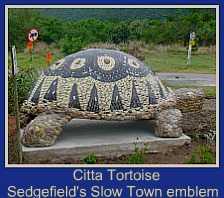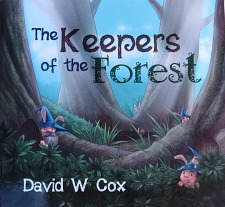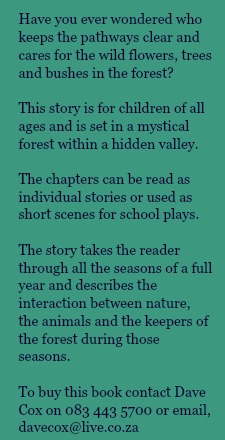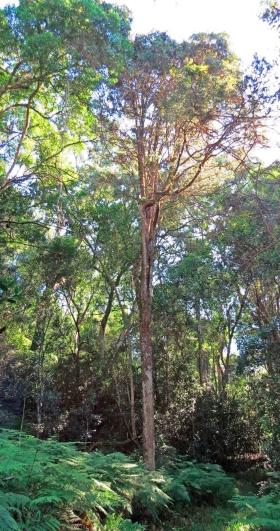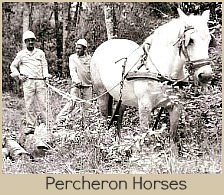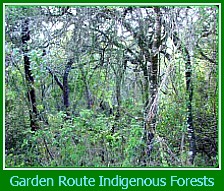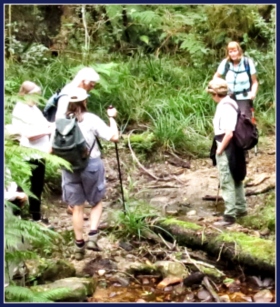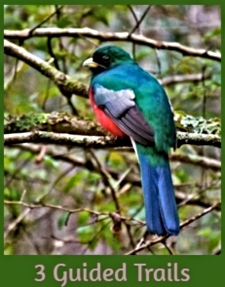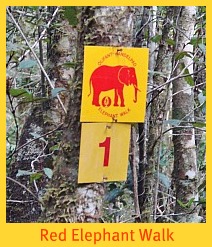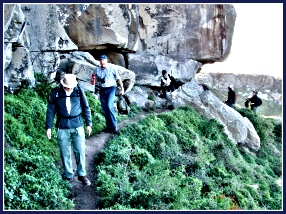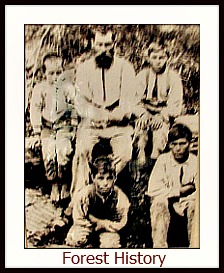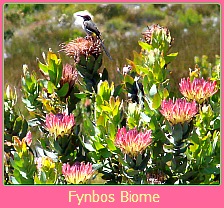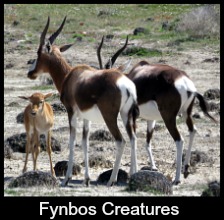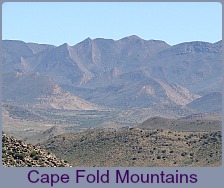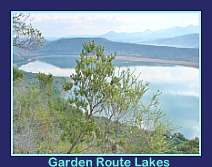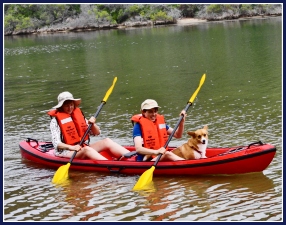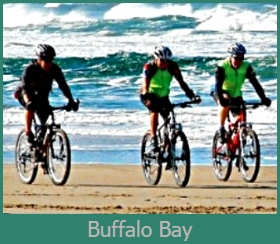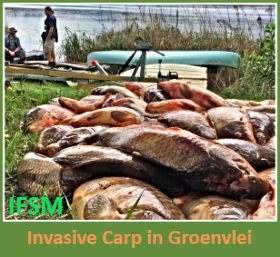The Knysna Elephants
The story of the Knysna elephants intrigues us because it seems that somehow, miraculously, these wonderful animals have found a way to live free and in relative safely in their forest domain despite the relentless harassment they have endured at the hand of man.
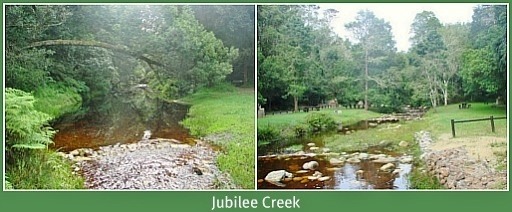
"To walk in the wake of elephants,
to be small in a world of giants,
to learn the spoor of silence
and the deep rumbling eloquence of kin."
Excerpt from the poem 'In the Tracks of Giants" - Ian McCallum
Their story also reflects the conflicting spiritual states of man. Some are still unconscious self-serving dog-eat-dog (and everything else) human beings and others are consciously caring, sharing, co-operative live-and-let-live human beings.
It has nothing to do with what God you believe in or what church you worship in but everything to do with how you treat your co-inhabitants on this planet. Don’t be fooled, the earthly status that is granted to a man is no reflection of his spiritual state!
The latter is not determined by church ranking either but by the condition of spiritual awareness and the actions that manifest from that condition.
History records that along with buffalo, antelope, lion and hippopotamus,herds of elephant roamed the fynbos, forests and beaches of the southern Cape region. The indigenous people had co-existed with these wild creatures. What they killed for food and used for clothing and other simple needs did not threaten any species be it plant or animal.
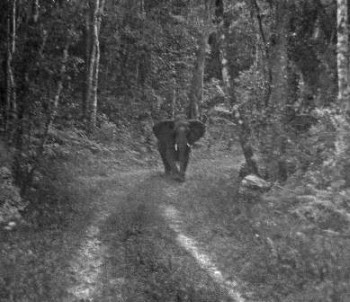 Elephant cow on Welkompad in the Harkerville Forest 6-12-1968 - photo - Dave Reynell
Elephant cow on Welkompad in the Harkerville Forest 6-12-1968 - photo - Dave ReynellDecimation of the Knysna Elephants
The arrival of colonists with intent to settle and establish a new life for themselves on this wild and unexplored continent changed all that. It took less than 200 years to all but destroy the forests and sensitive eco-systems and to hunt the abundant wild life to the point of extinction.
Today, the large predators and large mammals like hippopotamus, rhino and elephant cannot be found outside of game parks. The Knysna elephants called so because of the restricted area they live in today are the one exception. Nonetheless, these highly intelligent creatures suffered ruthless hunting for their ivory, skins and just for sport by royalty and trophy hunters.
As early as 1870 it was estimated that only 400-500 elephants roamed the forests out of thousands that had inhabited the wider area including fynbos and grasslands in earlier centuries. Captain Harison, Conservator of the forests between 1856 and 1874, earnestly requested the Colonial Government to pass legislation to protect the elephants – but in vain!
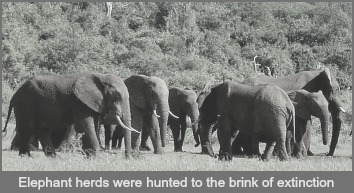
Elephant hunting became a popular pastime and British royalty joined in when the visiting Duke of Edinburgh and his party spent several days pursuing and killing the great beasts in the Knynsa forest. By 1910 only 40-50 elephants remained. By 1914 it was ascertained that only 20 remained.
It was the infamous hunt of the ruthless showman Major Pretorius that signed the death warrant of the Knysna elephants. This inveterate hunter had already shot over 120 of the great beasts in the Addo region. The remaining few, 16 to be exact, had found tentative protection on a private farm when a huge public outcry brought the killing to an end.
In 1920 Pretorius sought and was given permission to kill one Knysna elephant to supposedly investigate whether they were of the same species or a sub-species of the Addo elephant. With a crowd of witnesses looking on, in a total botch-up, five were dead before he was done.
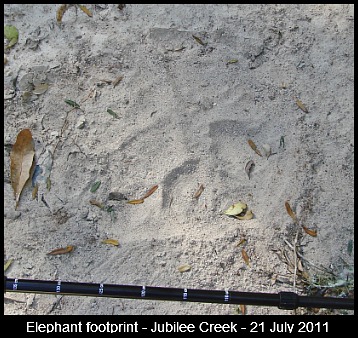
In 1968 a 10 day survey by the Eastern Cape branch of the Wildlife Society of Southern Africa established that 7 Knysna elephants still lived in the forest, 2 adult bulls, a male youngster, two cows, one calf and “Aftand” a legendary bull.
Another more lengthy survey was conducted between February 1969 and January 1970. Nick Carter was commissioned jointly by the department of Nature Conservation and the Department of Forestry. A professional game warden, Nick had much experience relating to working with elephants in Kenya and the Kruger Park.
He and his trackers were able to positively identify 11 individuals and make detailed notes about each of them. This was a major accomplishment, considering the terrain the Knysna elephants had to be tracked in and their own secretive natures inbred as a survival mechanism.
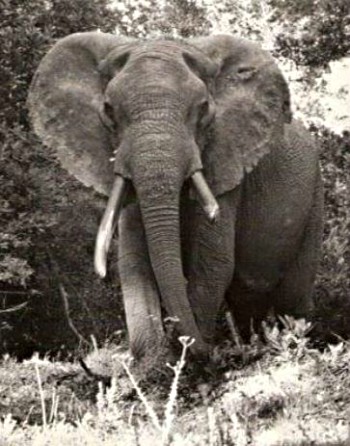 Aftand in Kruisfontein State Forest - photo - Prof. Brian Bredenkamp 8-12-1970
Aftand in Kruisfontein State Forest - photo - Prof. Brian Bredenkamp 8-12-1970Carter recommended that this remnant of the large herds of Southern Cape elephants should be actively protected as they were subject to poaching and to being shot at when they entered onto smallholdings adjacent to the forest. Despite promises by the Forestry Department to do this, nothing materialised.
On the contrary, in 1971 a senior official, Dr F. von Breitenbach ordered Aftand, (45-50 years of age)a majestic male in his prime, to be shot because of his persistent raiding of smallholdings. There were better solutions but there was no will to implement them.
The outcry that resulted when the deed was revealed and the court case that followed, achieved little – the accused was acquitted on a technicality and the elephant could not be revived from the dead.
Once again meaningless promises were made by the Forestry Department to appoint an official to concentrate on the forest fauna but nothing came of it because 10 years later, by 1981 another search could only locate 3 Knysna elephants in the forest!
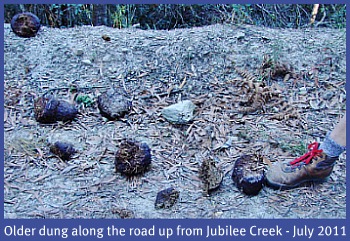
The Endangered Wildlife Trust and the Argus Newspaper Group were responsible for engineering the creation of the Elephant Working Group that was made up of 10 eminent people in relevant conservation bodies.
They were tasked with investigating the Knysna elephants situation but the summary of their recommendation elicited a negative response from the Department of Environmental Affairs.
The Knysna Centre of the Wildlife Society with a very determined chairperson Margo Mackay at its helm, thereupon organised a petition which received 4000 signatures that was duly presented to the then Prime Minister Mr. P.W. Botha. He however, instructed that it should be forwarded to the D.E.A. where their Director General again rejected the document with his explanations in an 8-page report.
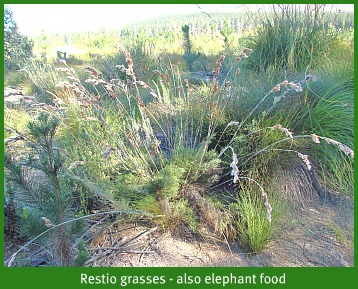
In July 1994 after fruitless years of wrangling and negotiating with government departments, the newly formed Rhino and Elephant Foundation, with Chairman, Clive Walker and Dr Anthony Hall-Martin and Vice-Chairman John Ilsley finally secured the go-ahead to introduce 3 young elephants from Kruger National Park to the Knynsa Forest. Mazda Wildlife Fund provided the transport.
It all came to naught. Unfortunately their timing had something to do with it. Moving the animals from a relatively mild winter climate in the Lowveld to a very cold wet one on the Garden Route caused the youngest one to die within 3 months of arrival, partly through stress, perhaps bullying by the other two older youngsters and also, pneumonia. No one thought to provide the young elephants with some form of shelter from the winter chill and icy rain. A summer move would have been better!
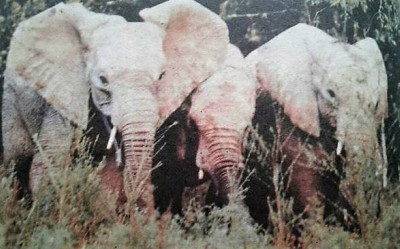 3 Young Elelphants imported from Kruger National Park - Photo-Dept. of Forestry
3 Young Elelphants imported from Kruger National Park - Photo-Dept. of ForestryAfter the arrival of the three young elephants another search was conducted to trace the existing Knysna elephants.
When it transpired that only an old Matriarch could be found, and no signs of the other younger elephants came to light, it was clear that no breeding could take place with 2 young female elephants.
For unknown reasons the matriarch distanced herself from the two youngsters so that they landed up in the unnatural situation of living by themselves without the hierarchy present in a herd.
Within 3 years, it was decided to relocate them to Shamwari Private Game Reserve in the Eastern Cape. The whole hopeful costly experiment to add new blood to the existing herd of Knysna elephants ended in dismal failure.
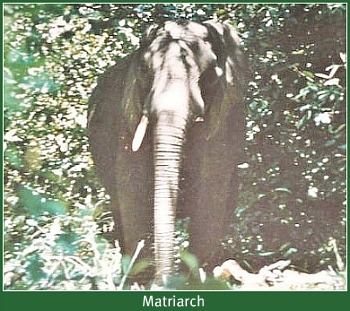
So, the Knysna elephants had retreated into inaccessible areas deep within the forest and eventually, shamefully, in our lifetime, all signs indicated that just one old Matriarch remained.
Many believed that even the rest of the 11 that had been identified by Nick Carter had been poached or shot and killed for inadvertently venturing onto farmland.
As no bodies were found, it was suspected that they could have fled wounded (as had often been the case through-out their history in their interactions with men) and died somewhere inaccessible. The Knysna elephants had truly been reduced to mythical phantoms of the forests.
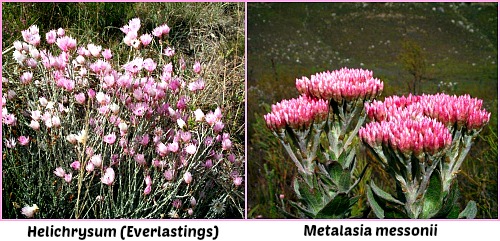
“In the beauty and harmony of nature I see the character of God – his limitless imagination and creativity, his love and compassion, his power and awesomeness.”– Anonymous
The 4 Elephant trails in the Diepwalle Forest remind us and visitors that once this area was home to herds of elephant that roamed freely through the larger Western Cape forests that stretched from Mossel Bay to Tsitsikamma. Their range included fynbos areas and even the seashore.
“Let no one say and say it to your shame
That there was beauty here until you came”
Rudyard Kipling
It is too late when something has been irretrievably lost to put a value to it. Nature and wildlife cannot have a monetary value placed on it anymore than a human life can.
All living things whether plants or animals have an intrinsic value – that means, because they exist, they are valuable – from the least to the greatest - because each has a role to play in the ineffable scheme of things.

Enter Gareth Patterson lover of nature, lions and all living things. On his own without any fanfare, he made it his mission to look for evidence of the Knysna elephants in the Garden Route indigenous forests.
With no preconceived ideas and without knowing what to expect, he started walking along forest pathways, day after day, week after week.
As his senses attuned to the forest environment he became aware of subtle signs of elephant presence and he decided to investigate the elephant droppings he came across.
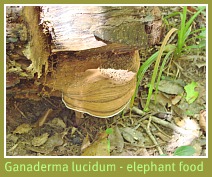
He found a good deal of fynbos in the dung revealing, surprisingly, that the Knysna elephants spent a fair amount of time out of the forest in all likelihood, at night.
Analysis proved that the elephants’ diet was not deficient in nutrients as was reported at one time but a healthy one, adequate for breeding and raising young.
He found different sizes of elephant dung and places where elephants had lain. They were clues that pointed to there being more than one elephant.
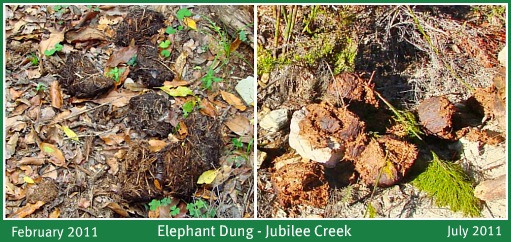
He then connected with an American scientist who used the bolus, the external mucous around the elephant’s stool that scraped against the intestine to do DNA testing on.
Gareth communicated with her and carefully collected samples over a period of time and sent them to America.
The results that came back astounded him and amazed everyone..... There are definitely several, potentially a reasonable herd of elephants living secretively in the depths of the Knysna forests.
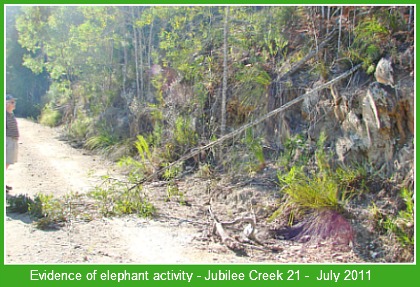
The Knysna elephants are thus the most southerly free roaming elephants on the African continent and they have managed to survive and to a small extent recover from the most heinous of persecutions.
They share the forest with other secretive creatures like caracal, leopard, genet cat, porcupine, honey-badger and bush-pig, Baboons and monkeys, and the shy but fierce bushbuck.
To secure the recovery of the Knysna elephants however, it may be necessary to introduce a mature male to this small herd and at this point in time there is no indication as to whether SANParks and DAFF are considering this option.
The story continues... How will men and their decisions or indecision impact on the future of these special creatures, these determined survivors, these Knysna elephants???
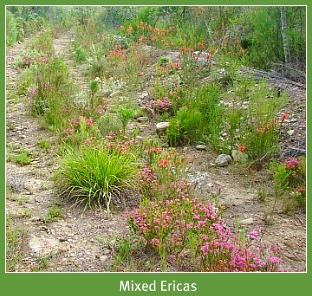
It took only 200 years for the mighty forests and the wildlife that lived in and around them to be decimated by European settlement. What is seen today are but remnants of a once extensive and magnificent tropical rain forest. The security of either is no sure thing!
Now the forests fall under the Department of Agriculture, Forestry and Fisheries (DAFF). Their management is determined on political whim, available finance and the expertise of the men in charge of these departments. The names of the departments keep changing and as well as the people who run them.
It is suggested that professional hunters have infiltrated conservation bodies. They propose trophy hunting to make wildlife sustainable. They also own game-farms so this proposal will enrich them personally. Their interest is clearly not just the preservation of wildlife for its own sake but for their financial benefit.
However, hunting farms do nothing to contribute towards functional ecosystems and just transform wildlife into commercial livestock.
According to a review paper titled Trophic Downgrading of Planet Earth, published in the journal Science (Vol. 333 no 6040 pp. 301-306) on 15 July 2011, killing top predators is humankind’s most pervasive influence on nature that has far reaching and devastating effects. It notes that we are experiencing the sixth mass extinction in history, but it’s the first to be caused by humans and despite the number of studies that can be conducted while animals are still alive, no one actually knows what the effect will be until they disappear.
The study was conducted by a team of 24 scientists from around the world who compiled evidence from both experiments and observations to draw conclusions about the decline of top predators and herbivores on land, in the ocean and in freshwater.
Some of the additional consequences noted were changes in vegetation, water quality, the frequency of wildfires, invasive species and the spread of infectious diseases. The review cited examples from the vegetation recovery after wolves were reintroduced at Yellowstone to the increase in intestinal parasites spread from baboons to each other and humans as a result of the loss of lions and leopards in Africa.
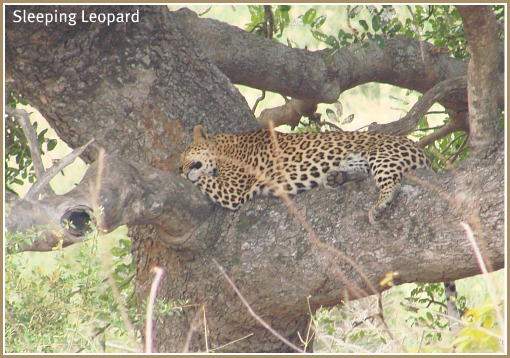
And it seems that unconscious humanity is still intent on destroying beautiful creatures on our planet. To them they have no value if they can’t be translated into money in their bank accounts. Once again a secretive and magnificent animal similar to the Knysna elephants, is under threat - the leopard. In the Baviaanskloof it is being trapped and shot by rabid farmers unprepared to consider alternatives although its been proved that wildlife friendly solutions are more cost effective and better environmental sustaining options in the long term.
These farmers are aided and abetted by Eastern Cape Nature Conservation who have issued them with permits to allow trophy hunting of “troublesome” animals. Elsewhere religious sects and Zulu royalty use the leopard’s skin as a status symbol for traditional occasions. It is clear that the leopard is also in serious trouble. Go to www.Landmarkfoundation.org.za to see the stories of individual leopards and those farmers who don’t care to support wildlife friendly methods of preserving our heritage. Determine not to support them either! In other words speak with your money!

Added to that is the horrifying reality that again, like the Knysna elephants, our rhino are being cruelly slaughtered, poached for their horn throughout Africa and South Africa for eastern markets. It has been revealed in recent arrests that even wildlife veterinary surgeons are involved in the poaching.
People, a continent away, are disconnected from the results their fetishes are having on Africa's wildlife. When there is money to be made that is the over-riding consideration. One has to wonder if these animals will one day only be seen in an unnatural miserable zoo environment, the quality of their lives determined by the morality and qualifications of their keepers.
What a damning indictment that will be if conscious human beings let the unconscious human beings have their way. Those of us who truly live “in the present” would do nothing to harm our future. We know we are a part of the fabric of life and that precious realisation is a great source of wonder as we consider the myriad intricate life forms and ecosystems on our planet.
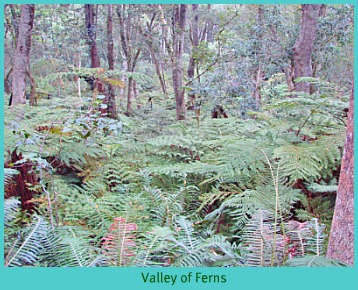
It is heart-warming to realise the fortitude of the Knysna elephants who have endured over 200 years of man's unthinking cruel persecution of them to reach this point in time. It is time to honour and respect these sentient beings for the hope they bring to our world in their proven ability to survive against all odds.
References
The Knysna and Tsitsikamma Forests - Chief Directorate: Forestry
The Knysna Elephants and their Forest Home - Margo Mackay
The Secret Elephants - Gareth Patterson

Links to Relevant Sites


Landmark Foundation encourages Communities to make changes happen that are driven by the voices of individuals. Every small action does make that difference. Simple things like a conversation with a friend to bigger things like asking your retailer to stock wildlife-friendly products, petitioning government to ban lethal controls, racing for leopards, dedicating your time and services or giving money - it all helps build the conservation economy and a culture of giving back to the wild places we love.


Campaign against canned hunting. Ban Trophy Hunting and Gin traps. Our mission is to get all trophy hunting banned in South Africa, since all trophy hunting in South Africa is canned to a greater or lesser extent. To that end, CACH has put together a comprehensive audio visual presentation which has been shown to thousands of people from all walks of life in South Africa, Kenya and U.K see it here!


